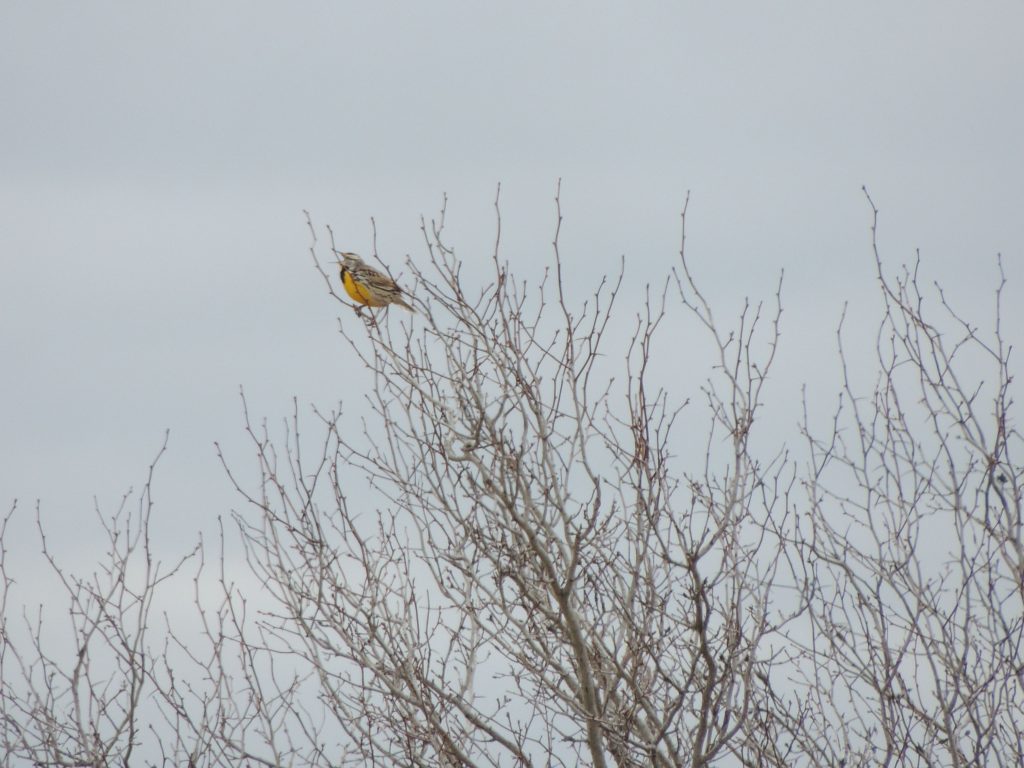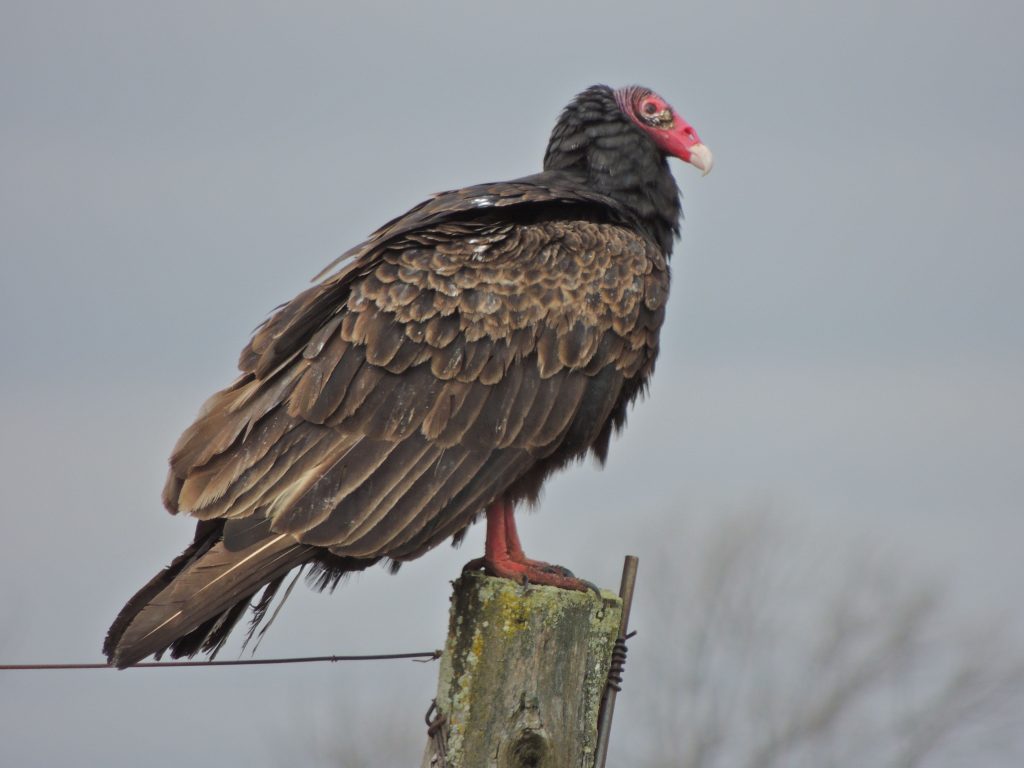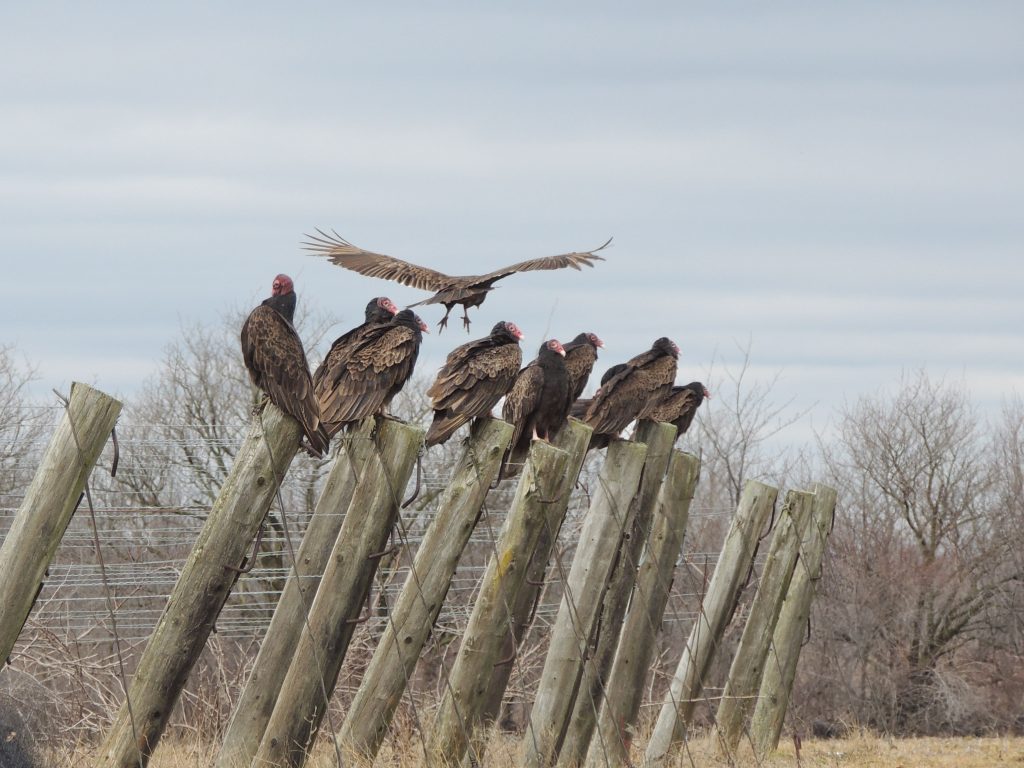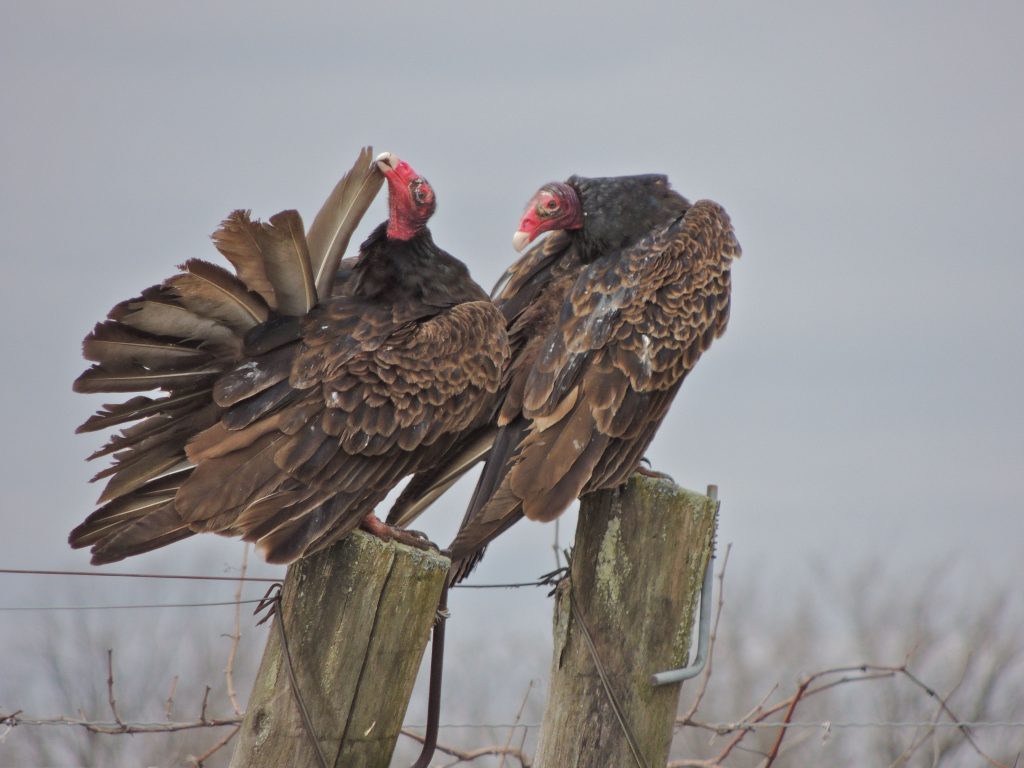1 April 2017. Vinemount, Hamilton ON. A day of nasty, stay-indoors, weather behind us I went out looking for some of the shorebirds and ducks some people have been seeing. Just as in my posting of three or four days ago, I watched a mass of puddle-ducks for a while: Mallards, Northern Pintails, American Black Ducks, Gadwall, American Wigeon and Green-winged Teal. They were happily resting and feeding in a waterlogged farm field and would probably still be there if a couple of young guys on noisy dirt-bikes hadn’t shattered the silence and scattered them. I watched for a little while longer as small groups flew around high overhead, I decided it was a good opportunity to work on identifying ducks on the wing; a skill that many hunters acquire through hours huddled in an icy November marsh. I did advance my knowledge a little noting that Northern Pintails in flight look long and lean, have slender angular, pointed wings, and the males’ long tail feathers are quite obvious.

I did a bit more, rather aimless, driving around and looking; an approach to birding I find unsatisfying. I spotted a couple of early Eastern Meadowlarks singing from the top of hawthorns in a dry field, they’re regulars at this site and one of the treats of early spring.
The spring flight of inbound Turkey Vultures is going full tilt and it didn’t surprise me to see a low-flying swirl of them not far up the road. As I drove towards them I realized they had taken a break from migration and their interest was something lying in the ditch, delectable and probably well aged. This wasn’t just a gathering of Turkey Vultures it was a dinner party.

My car’s approach caused them to disperse, albeit reluctantly, they really didn’t want to abandon the feast. Sensing that their urge to continue eating was greater than their concern about me in my car, I pulled carefully and strategically to the side of the road hoping to photograph them as they returned. Then, in the opposite direction, I was intrigued to see that up to a dozen of them had settled barely twenty meters away on the end-posts of a series of grapevine fences. It was a captivating sight and far from static as they jostled for room and as new birds arrived.
They don’t have a great reputation Turkey Vultures. Viewed from our cultural vantage point we see an ugly, bare-skinned head on a bird known to clean up corpses. It doesn’t help that they roost communally and apparently poop on each other; many of the individuals I watched were streaked with white. But they are well adapted to their role as scavengers of carrion: the featherless head is perfect for sticking inside a body cavity, they soar and wheel high in the summer sky taking advantage of helpful breezes and thermals and find their meals by following the distinctive odor of carcasses. I wouldn’t say I like them exactly, not the way I like vireos or bee-eaters, but admire them? Yes I do.
